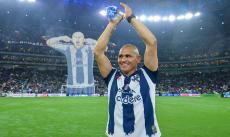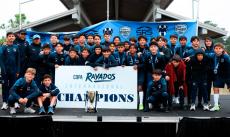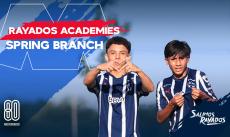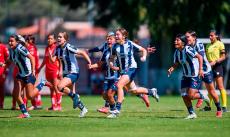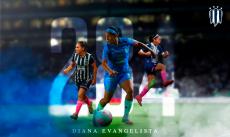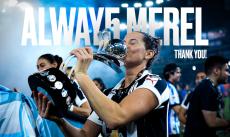THE CONQUEST OF THE FANS (1970-1980)
The 70’s are fundamental in the history of the Club, as soccer became Monterrey’s favorite sport and reached great social transcendence.
After showing good attendance and even occasional sellouts during the 60s, in the late 1960’s and early 1970’s attendance dropped again and the franchise was at risk of being sold to another city.
This situation changed in 1971, when Alberto Santos de Hoyos took over the presidency of the Club and, together with Miguel Gómez Collado, began an era of good sporting and economic results.

In the 1970-1971 and 1971-1972 seasons, Monterrey returned to the top.
The defense was formed of goalkeeper Javier Quintero Morones and defenders Magdaleno Cano, Guarací Barbosa, Daniel Ernesto Musante and Vicente Álvarez.
On offense, the Rayados had the skillful Paco Avilán and the goal-scoring duo of Ubirajara Chagas “Bira” and a young, previously unknown player: Alfredo “El Alacrán” Jiménez.
With the goal-scoring contribution of both and the defensive solidity, Monterrey became a very difficult opponent to beat and entered the fight for the title.
Jiménez scored 18 goals in the 1970-1971 season and Rayados finished in third place. The following season, Monterrey qualified to the Semifinal in the first Liguilla in Mexican soccer history with 4 participants.
Unfortunately, the team did not advance to the Final, being eliminated by America in an unforgettable Semifinal that had to go to a third tiebreaker game.

After conducting market research showing that the location of the Estadio Universitario would facilitate access to more fans, the board decided to move the team to a different venue in the middle of the 1972-1973 season.
On February 3, 1973 Monterrey moved to the Universitario, which was its home stadium until June 1980.
Another key decision was to change the time of the games played on Saturdays from 8 p.m. to 5 p.m.
The crowds to watch Rayados became a constant and the fans for the team and for soccer grew at an unimaginable rate.
By the summer of 1973, the attendance was around 50,000 fans, since there were no seats, the capacity was greater.

Another factor that contributed to the popularity of soccer in the city was the powerful team that the board put together between 1973 and 1976, which twice came very close to the championship.
High-quality foreigners arrived, such as Brazilian Milton Carlos and Uruguayans Nilo Acuña, Francisco Bertocchi and Rubén Romeo Corbo; as well as Mexicans of national team level, such as Luis Montoya, Francisco Solís, Gustavo "Halcón" Peña. In addition, two well-known players returned: Pedro Damián Alvarez and Juan “Juanito” González.
In 1973-1974, Monterrey finished as overall runner-up and won 22 of 34 games, tied 4 and lost 8. The new scoring duo of Milton Carlos and Bertocchi scored 40 goals.
This was one of the best seasons in the Club's history and attracted thousands of new fans to the stadium.

In the 1974-1975 season, Monterrey was the highest scoring team, with 72 scores in 38 games.
Ignacio Jáuregui left the team’s technical direction prior to the 1975-1976 season, and his place was taken by legendary Chilean coach Fernando Riera, a coach who had achieved third place in the 1962 World Cup in Chile.

Starting in 1976, the team underwent changes in both the board and the staff. Although the legendary Monterrey of the 70’s did not win the title, it achieved something more important: to conquer the fans.
The long battle to make soccer a popular sport in a baseball environment was finally possible thanks to the vision and leadership of Alberto Santos, and to a team that captivated fans with its good soccer.

 |
 |
 |
 |
 |
 |
 |
 |














